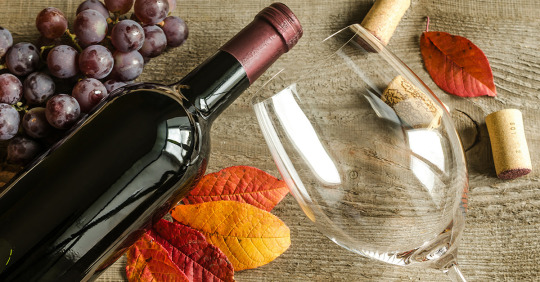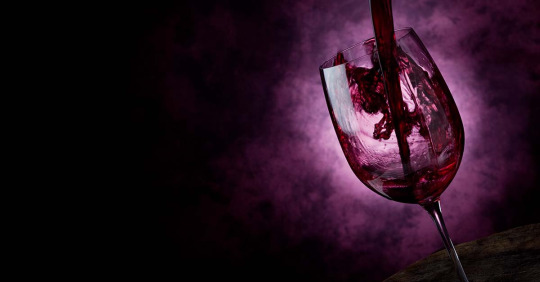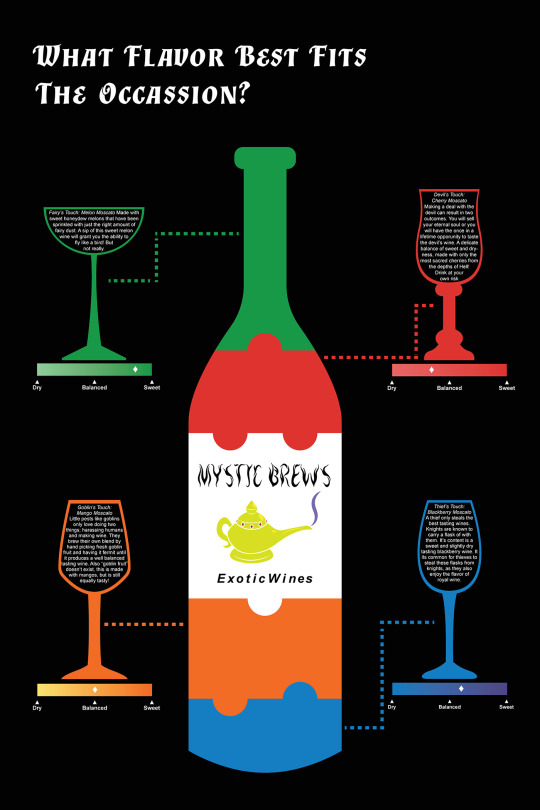Don't wanna be here? Send us removal request.
Text
The Beginning Wine Lover

Wine
Wine is the perfect drink for a wide variety of situations, from dinner to special occasions to romantic settings, even to backyard barbecues. Indeed, wine is one of the world's most widely consumed alcoholic beverages. Wine is a drink made from fermented grapes, and comes in a variety of tastes and colors based on the type of grape used to create the wine. One aspect that makes wine different from other beverages is the importance of aging. Many wine drinkers are intrigued by the wine making process and the length of time required to make quality wine. For this reason, vineyard and winery tours are popular tourist and recreational activities. Get best wine kit by visit this website: lovecraftwine.com.
Wine tasting for beginners
There is a lot more to tasting wine than simply tipping back your glass. Indeed, there are five main steps to assessing the quality of wine, and only two of them actually involving drinking any wine. This method of wine tasting is often given the pneumonic key "The Five S's: See, Swirl, Sniff, Sip, Savor." The steps include judging the color, swirling the wine in the glass, smelling the aroma of the wine, sipping and tasting the wine, and savoring the flavor to test how long lasting the taste is in your mouth.
To avoid getting tipsy when testing wines, which can color your perception, most wine tasters do not actually drink the wine. At events and wineries, wine tasters may receive a spittoon into which to spit the wine, or may be asked to simply spit the wine onto the ground if it is an outdoor tasting.
A variation of tasting is blind tasting. Blind tasting involves offering a taste of the wine without allowing the taster any indication as to the wine's origins or makeup. This usually means presenting the wine without allowing the taster to see the bottle, know the name or the date of origin, and, in some cases, even see the color. In those instances, the wine is often presented in a black or otherwise dark glass.
Many connoisseurs of wine and wine tasting travel around the world to some of the most notable wineries and vineyards on the globe in order to participate in wine tasting and winery tours. In many instances, wineries may offer tastings of their vintage wines and other more notable wines for a higher price.
Different types of wines
Wine is usually categorized in relation to its place of origin and/or type of grape. Pinot, Chardonnay, and Merlot are examples of wines named for their grape, while Willamette Valley wines and Napa Valley wines are common examples of wines named for the region where they are made. In some cases, both the production region and the grape variety are used in the name of the wine, which offers wine connoisseurs an idea of the wine without ever having to taste it.
When classifying wines, much depends on taste, use, and presentation. Red and white wine, for instance, are commonly matched with different types of food: white with pasta and poultry, and red with red meats. Red wine is made with grape skins, while white wine is made in the absence of grape skins. Other wine variations include sparkling wines such as champagne, cooking wines, table wines that are often less expensive, and many other variations.
Where to store your wine
If you are a wine collector or connoisseur, or indeed run a winery or vineyard, it is important to maintain a wine cellar. A wine cellar is essential for preserving the quality and taste of your wine. Cellars can do this by maintaining a constant temperature and humidity, and keep the wine in darkness. Temperature fluctuations and exposure to heat and light can cause wine to spoil and lose its best attributes. Not only do cellars keep the wines from spoiling, they can also improve certain wines by bringing out its aroma and flavor.
Where does wine come from?
The world leader for wine production is Italy. Indeed, the images of generations-old wineries and vineyards are almost synonymous with the Italian countryside and street side bistros. After Italy in terms of the volume of annual wine production is France and Spain. The United States ranks sixth in the world, with the vast majority of the wine coming from the vineyards and wineries of the California valleys.
Everyone loves wine
There is an interesting link between references to wine in popular culture and spikes in interest in wine and wine tasting, even to specific types of wine. A perfect example of this is the 2004 surprise hit Sideways. In many European countries, however, interest in understanding and appreciating wine has been ongoing for centuries, and needs little boosts from pop culture references. Other notable wine-laden films include French Kiss, A Walk in the Clouds, and many others.
0 notes
Text
How To Taste Wine? Demystifying The Process

The examination and evaluation of wine alerts and stimulates all of our senses. How to taste wine incorporates: sight, the way wine looks in the glass, with regard to color, transparency or opaqueness; smell, the fragrance released in the glass; taste, the sensations in the mouth; and the feel of its body or weight on our palate, which brings us to the finish, better understood as the aftertaste; all combine together to deduce the wine's complexity, character and overall quality. Touch and even hearing, by the sound of a popping cork, awaken our expectations of the yet to be sampled wine.
When we talk about the taste of a wine we are referring to sweet (grape sugar), sour (acidity), salt, bitter (tannin, or astringency causing dry, puckery mouth feeling), and umami. Umami isa Japanese word meaning "savory" -- it applies to the sensation of "savoriness", and is one of the five basic tastes sensed by the tongue in how we taste wine.
The result is you smell as well as taste wine
The taste perception of spice, cherry, and red currant is actually our sense of smell. Taste and smell are often confused. The swallowing process aides the retro-nasal olfaction by carrying the residual wine vapors in the mouth - retro-nasally - to the smell center because of the connection of the mouth to the nose via the retro-nasal passage. This is why wine tasters gargle wine in their mouths.
The best objective assessment of wine is a comparison performed among several wines, referred to as tasting "flights". Wines may be deliberately selected for their vintage, known as horizontal tasting, or multiple vintages from a particular winery, referred to as vertical tasting. To further support an unbiased analysis, bottles may be disguised in a "blind" tasting, to rule out any prejudice regarding vintage, geographic origin, winery, price, reputation, color, or other considerations.
To chill or not to chill, that is the question
Champagnes and other sparkling wines are best chilled to 43-50F. White wines should be between 55 and 60F; temperatures below this range can suppress the wine's bouquet (the smells that develop with age in the wine bottle associated with the fruit). New younger, lighter-bodied wine is more easily overpowered by the alcohol content, and should be served cooler. One of the youngest wines, Beaujolais, can be served chilled at 50-54F so the fruity, refreshing flavor will come through. Lighter-bodied reds like Chianti and some Pinot Noirs are best when slightly chilled at 55-60F. The full-bodied wines such as Syrah and Cabernet Sauvignon are best enjoyed a touch warmer than a wine cellar at 59-64F. Sweet Madeira or vintage Port at 50-60F.
The shape of the tasting glass affects how we taste wine and bouquet perception.
A glass that is wider at the bottom with a narrower opening at the top is preferred; a tulip shaped glass that is wider at the top is the least preferable. The international standard wine tasting glass is the ISO (International Organization for Standardization) XL5, which has a low center of gravity to make swirling easier. Swirling releases the esters, ethers, and aldehydes that combine with oxygen to yield the wine's bouquet.
The order in how to taste wine
The order in how to taste the wine is important if you do not want your assessment to be improperly influenced or skewed. The heavier, sweet wines can dominate the lighter wines. Sparkling wines should be tasted first, followed by light wines, then by heavier whites, roses, light reds, heavy reds, and sweet wines last. To know before tasting which is to be the heavier from the lighter you can utilize the appearance and nose (its bouquet or aroma ) as a guide. Heavier wines will be deeper in color with likely more intense aroma to the nose. Sweeter wines when swirled will appear more dense with apparent viscous streaks called tears, legs or what the Germans call church windows.
The basic steps in how to taste wine
Judging the poured wine's color in the glass is the first step in how to taste wine to the oenephile (someone who enjoys wine) and best done against a white background or in natural daylight, with the glass held at an angle for the best perception of color and clarity. All wines should be bright and clean, free of particles or sediment. With reference to sparkling wines, the bead describes the size of the bubbles generated by the wine. White wines have a range of color from water white to deep golden depending on grape variety, sugar content and maturity. Red wines are a dense purple to pale cherry depending on age and grape variety. In this way, the knowledgeable wine taster can receive clues as to the grape variety, and whether the wine was aged in wood.
The procedure of how to taste wine continues with the swirling of the wine in the appropriately shaped glass, followed by the smell or the sniff. Are there any off odors, the smell of mustiness or a vinegary scent? If you sense the bouquet is clean, then sip and taste to assess the quality. Is the wine concentrated or light? Does it smell of fresh fruit, berries, or dried fruit, maybe flowers, nuts, spices, herbs, or vegetation? Is there a presence of vanilla, cedar, or can you perceive a scent from oak barrels? Does the wine show age and maturity with the smell of leather, coffee beans, chocolate, or truffles? First isolate the predominant smell and then identify the others. The nose is like a muscle, the more you use it, the more refined it will become.
This process facilitates the taster's observations to determine the wine's clarity, varietal character (appreciation for the achieved flavor and aroma of the varietal), integration (resulting sensory mouth feel involving astringency, the combination of textures, flavors, and overall "structure"), expressiveness (the wine's ability to exhibit its true character), complexity (describes the level of richness, bouquet and flavor from the fermentation and aging process), and connectedness (the evidence of taste between the wine and the soil from which its grapes grew).
Wine can affect the taster's judgment
How to taste wine at formal tastings, where dozens of wines may be judged, is different from social drinking in that tasters generally spit the wine out after each assessment. Assessments, descriptions and comparisons use recognized standards with respect to factors such as price range, the wine's region and vintage, any remarkable or unusual characteristics, and if it is typical of the region or diverges in style. There is a lot more to how to taste wine to judge quality than just tasting and swallowing.
0 notes
Text
Wine Infographic on Behance

0 notes
Text
Red Wine vs White Wine
youtube
1 note
·
View note